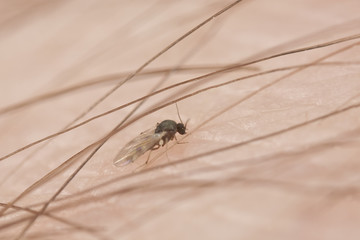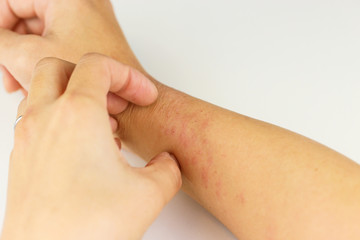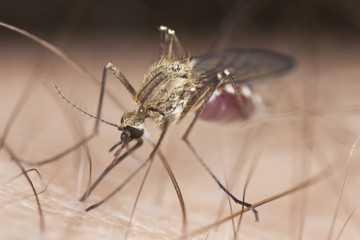River blindness (Onchocerciasis): What You Should Know

River blindness also known as Onchocerciasis is
an eye and skin disease that is caused by parasitic
worm Onchocerca volvulus infection. It is the second-most common cause of blindness due
to infection, after trachoma. It occurs mainly in sub-Saharan Africa and a few
isolated areas in the Americas (Brazil, Colombia, Guatemala, Mexico, and
Venezuela) and is transmitted by blackfly bites of the Simulium
type. Blackfly dwells near rivers and therefore, the sickness as a result of
the bites from this flies derives its name as River blindness. The adult female
worm (macrofilaria) produces thousands of baby or larval worms (microfilariae)
which migrate in the skin and the eye.
How it affects the body
When a blackfly bites a human, its larvae is released into
the body, which enters the subcutaneous tissues, where it develops into an
adult male and female worm (filarial nematodes). These worm then starts
reproducing in the human tissue and form microfilariae that moves to the
connective tissue and something to the urine, blood and sputum. A bacteria
called Wolbachia colonize and help
the microfilaria to survive. When the worms eventually dies, the human body immune
system response as a result tends to destroy the optical tissue in the eye.
Onchocerciasis symptoms and signs
The
symptoms and signs of onchocerciasis is as follows;
- Severe itching of the skin,
- Lymphadenitis (Lymph node inflammation),
- Bumps under the skin,
- Visual impairment and/or inability to distinguish certain colors, partial or complete blindness,
- Eosinophilia (unusually high levels of eosinophils in the blood),
- Depigmentation – 'leopard skin' appearance, usually on anterior lower leg,
- Acute papular onchodermatitis – scattered pruritic papules,
- Chronic papular onchodermatitis – larger papules, resulting in hyperpigmentation.
Prevention of onchocerciasis
Over the
years various programs has been developed by public health to control the
problem of onchocerciasis. Onchocerciasis Control Programme (OCP), was the first
of this programs. Different methods were carried out by the public health to
combat the development of this disease, and such methods are; the use of
larvicide spraying of fast- flowing rivers to reduce the blackflies
population. And starting from 1988 onward, treatment of onchocerciasis with the
help of ivermectin in the treatment of infected people was adopted.
Despite some major breakthrough in the treatment of onchocerciasis,
no vaccine has been developed to prevent its infection in humans, though the
vaccine for its prevention in cattle is in phase three trial.
Treatment of Onchocerciasis
Ivermectin (Mectizan) is the drug used in the treatment of the disease Onchocerciasis. infected people can be treated with two doses of ivermectin, six months apart, repeated every three years. The drug paralyses and kills the microfilariae causing fever, itching, and possibly oedema, arthritis and lymphadenopathy. Intense skin itching is eventually relieved, and the progression towards blindness is halted. The drug therefore prevents both morbidity and transmission for up to several months.
Ivermectin
treatment is particularly effective because it only needs to be taken once or
twice a year.
Ivermectin mechanism of action
Ivermectin
kills the parasite by interfering with the nervous system and muscle function,
in particular, by enhancing inhibitory neurotransmission. It binds to glutamate-gated chloride channels and activates it.
These channels, present in neurons and myocytes, are not invertebrate-specific,
but are protected in vertebrates from the action of ivermectin by the blood–brain barrier. Ivermectin is believed to
irreversibly activate these channel receptors in the worm, eventually causing
an inhibitory postsynaptic potential.
The chance of a future action potential occurring in synapses between
neurons decreases and the nematodes experience flaccid
paralysis followed by death.



No comments:
Post a Comment